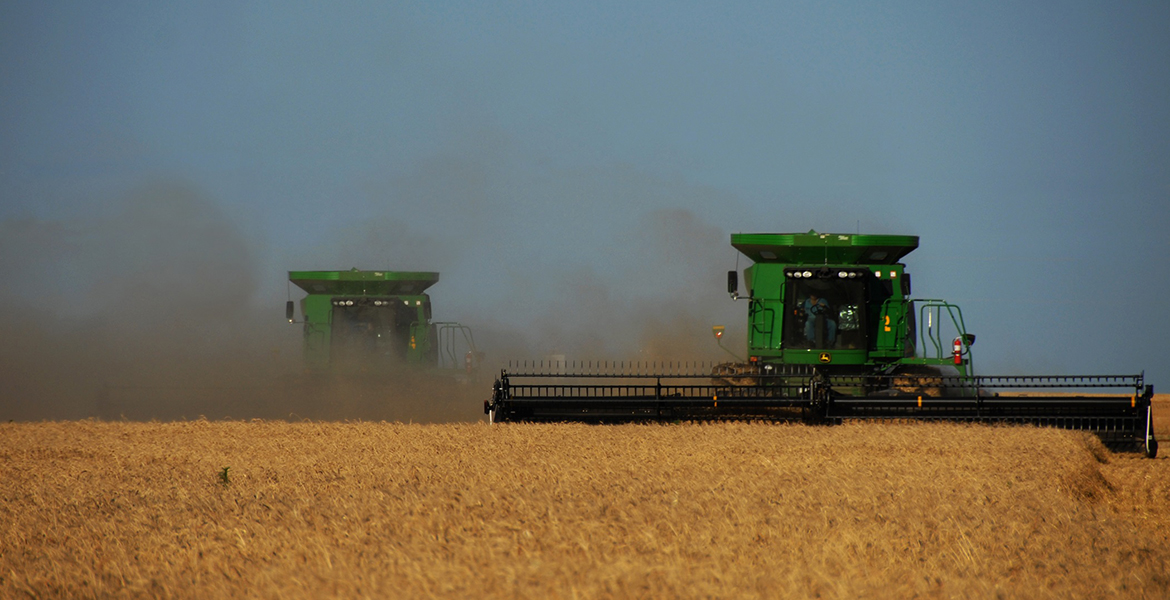
Wheat harvest adapts to COVID-19 precautions
Thursday, June 11, 2020
The COVID-19 pandemic has not kept combines out of wheat fields for Oklahoma’s annual harvest.
“With all the pandemic-related challenges going on this year, implementing safeguards through harvest season has been relatively straightforward and doable,” said Gary Strickland, Oklahoma State University Extension agricultural educator for Jackson and Greer counties and dryland cropping systems specialist with the university’s Southwest Research and Extension Center.
Addressing health risks has not been as difficult as some might think. For example, custom harvesters are already used to cleaning combines to reduce cross-contamination of seed as they move from field to field. They also are on perpetually tight schedules that lead many to:
- Send a single person into town to pick up meals and bring them back to others in their combine crews to reduce downtime.
- Stay in travel trailers as they make their annual pilgrimage northward from one state to the next.
- Work as many hours as possible during daylight, which cuts down on interaction with individuals and agribusiness enterprises outside contract operations.
“Custom harvesters often isolate as a group together in normal years, so adapting to the coronavirus pandemic is not all that much of a stretch,” Strickland said.
The Oklahoma Wheat Commission was an immediate champion of best management practices to reduce the spread of the coronavirus – and not just because so many agricultural producers are age 65 or older and may have related pre-existing conditions as well, the two groups most at risk from COVID-19.
“There was the obvious health concern about doing what is best for our extended agricultural community throughout Oklahoma and the region, but also the fact that society at large can’t afford disruptions to a sustained food supply,” OWC Executive Director Mike Schulte said. “Custom harvesters, grain elevator operators and so many others play key roles. In a way, the pandemic has helped more people become aware of the importance of our farmers and related agribusiness operators.”
OWC showcased and promoted guidelines from the Centers for Disease Control and Prevention through traditional news media, social media, newsletters, virtual meetings, phone calls, emails and other avenues. OSU Extension did the same.
“Social distancing may have come more easily to custom harvesters and farmers, most of whom are used to working spread out in fields and interacting with a limited number of people, mostly family and a tight group of friends,” Strickland said.
The annual harvest is worth about $600 million to the state’s economy. Oklahoma’s wheat harvest was projected in early May to be about 96.5 million bushels because of crop damage from an April 15 freeze. However, recent trips around the state have Schulte hopeful the number will be closer to 100 million bushels.
The OSU Southwest Research and Extension Center is part of both OSU Extension and the Oklahoma Agricultural Experiment Station system, two state agencies administered by the university’s Division of Agricultural Sciences and Natural Resources.
MEDIA CONTACT: Donald Stotts | Agricultural Communications Services | 405-744-4079 | donald.stotts@okstate.edu
